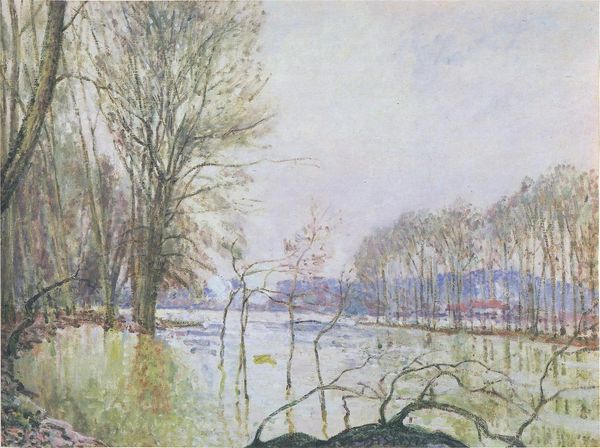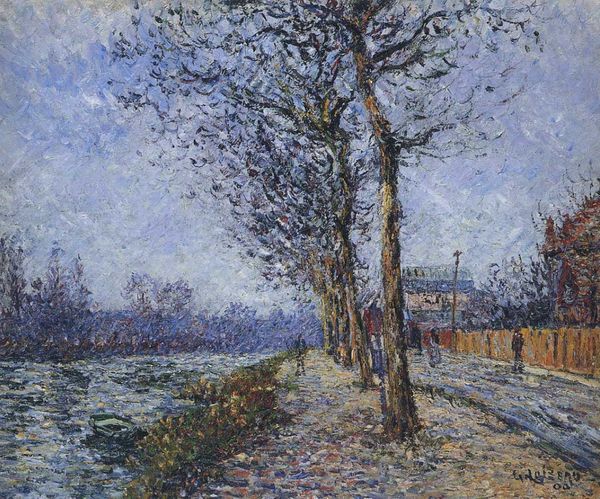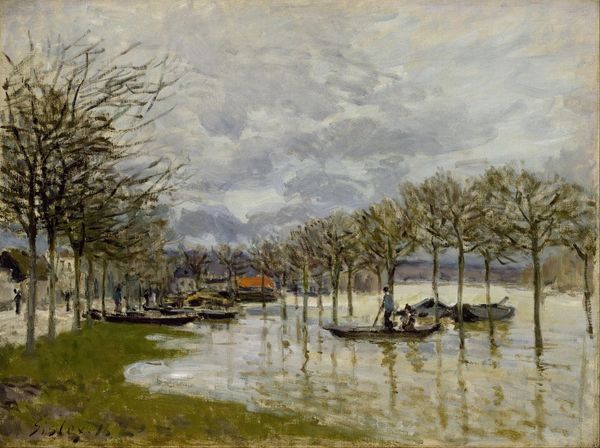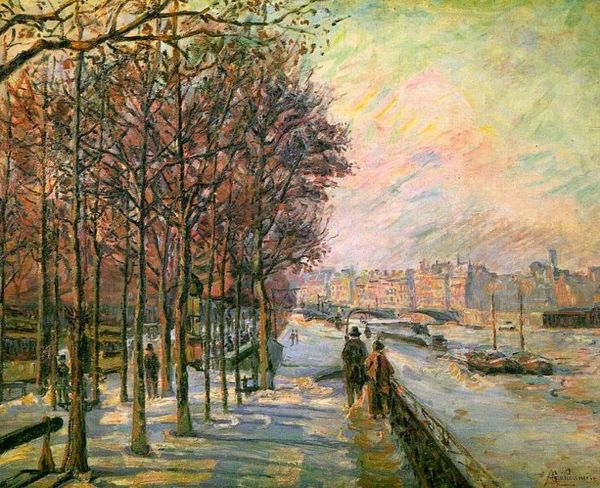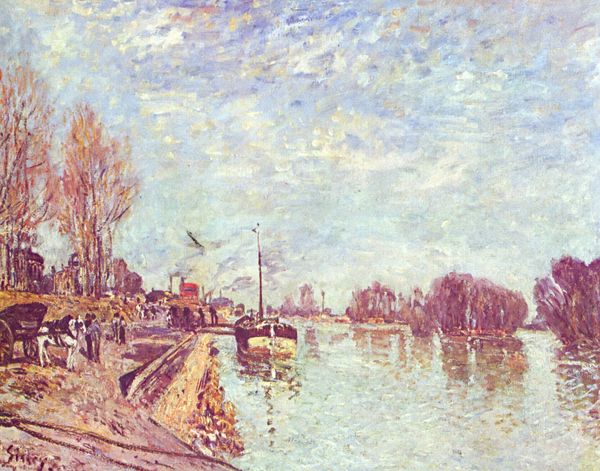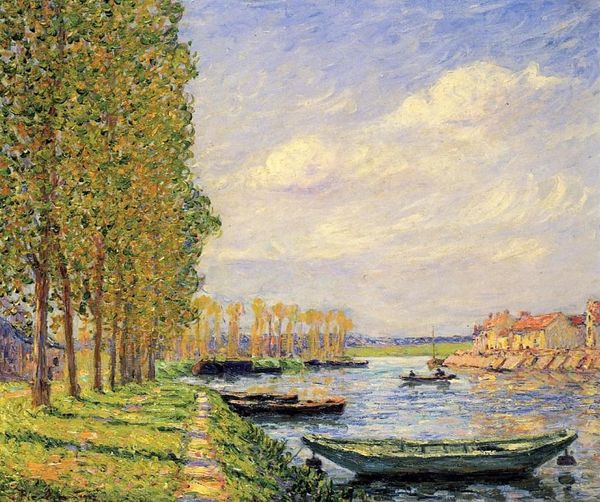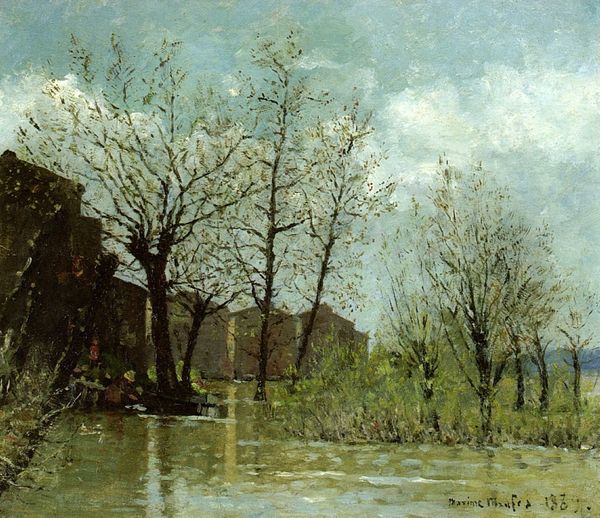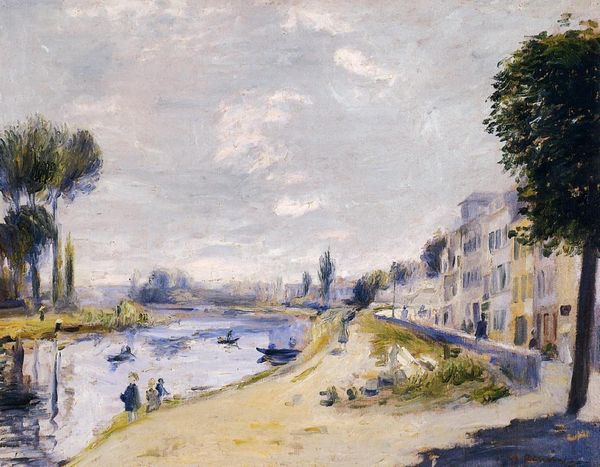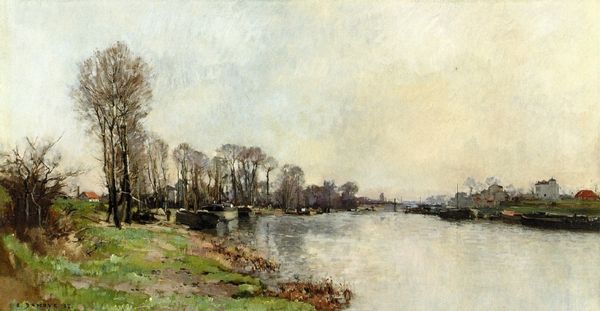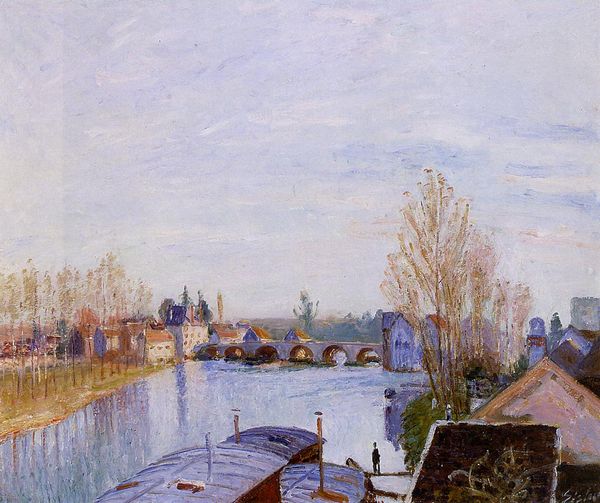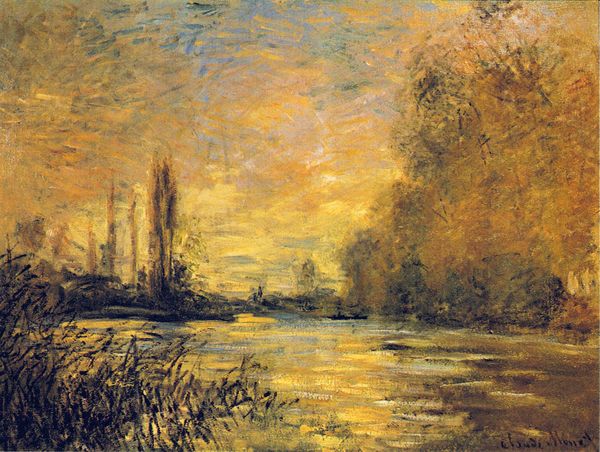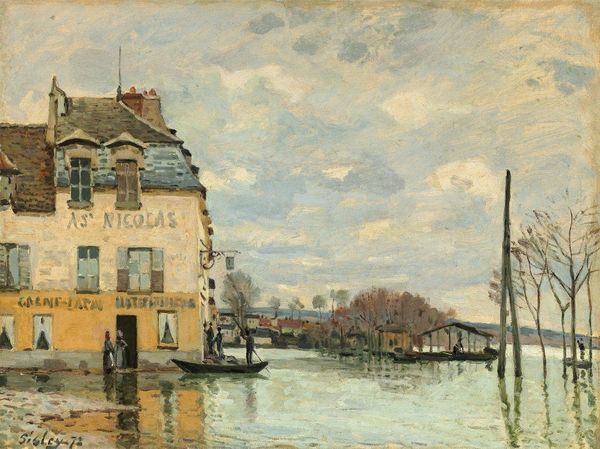
painting, oil-paint
#
tree
#
sky
#
painting
#
impressionism
#
impressionist painting style
#
oil-paint
#
landscape
#
house
#
impressionist landscape
#
oil painting
#
water
#
cityscape
#
building
Dimensions: 50 x 65 cm
Copyright: Public domain
Curator: Alfred Sisley painted this canvas, entitled “Flood at Port Marly,” in 1872, rendering the scene with oil paints. What’s your first impression of this piece? Editor: The prevailing gray gives it this somber, almost melancholic feeling. It’s like witnessing a quiet surrender to the inevitable power of nature. There is some harmony even in devastation. Curator: Indeed. Observe how the horizontal composition—the water mirroring the sky—dominates. Sisley’s treatment of light is critical. He avoids sharp contrasts. This unifies the composition and communicates atmospheric conditions. Editor: You are right, but the brushstrokes too. Notice how visible they are; it's like feeling the rain and wind on your skin just by looking at the painting. It isn't precise. I feel as though there’s a certain spontaneity, a sense of immediacy. I love that the bare trees look almost skeletal, providing a stark contrast to the submerged buildings. Curator: The trees establish a structural rhythm across the middle ground. This rhythm invites the eye to traverse the pictorial space in an incremental manner, delaying, but not precluding, the complete view. We can read the water as a signifier of disruption and instability. The color palette itself signifies restriction. Editor: I see that. I also love the very subtle pop of color of the houses with some orange and brown—tiny triumphs of human presence amidst this overpowering deluge, defiant against the greys and browns. It feels strangely comforting, like little beacons in a temporary water world. Curator: You are bringing up the contrast between architecture and naturalism. These sorts of structural oppositions were a prominent aesthetic mechanism of that era. His use of these components does indicate the symbolic themes relating to urban life during that time. Editor: It really pulls you into the scene, doesn't it? You're not just looking at a flood, but experiencing a moment frozen in time, with a subtle sense of resilience. What a statement, indeed! Curator: It’s the kind of landscape that persists in memory. An interesting articulation of temporality using impressionistic landscape structures.
Comments
No comments
Be the first to comment and join the conversation on the ultimate creative platform.
